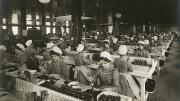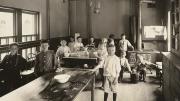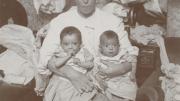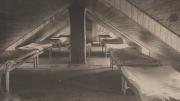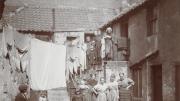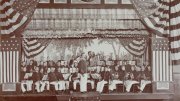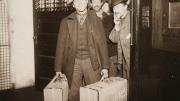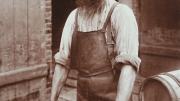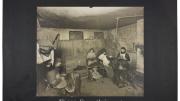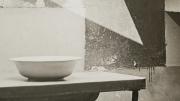The decades before and after the turn of the twentieth century have been called the Gilded Age, the Age of Innocence, the Age of Excess, the Progressive Era, and the Age of Reform. “The unregulated rags-to-riches economy brought extraordinary fortune to a few shrewd men like Andrew Carnegie, J.D. Rockefeller, and J.P. Morgan, but to most others—too many others—it brought extraordinary hardship,” writes Anthony W. Lee, professor of art history at Mount Holyoke College, in Instituting Reform: The Social Museum of Harvard University 1903-1931, just published by Harvard Art Museums (distributed by Yale University Press). “The conspicuous losers were people of color, workers, immigrants, the growing ranks of the unemployed, the hard-up families of the tenements, and the unsuspecting victims and displaced populations of military adventures abroad.”
In 1900, Francis Greenwood Peabody wrote, “Behind all the extraordinary achievements of modern civilization, its transformation of business methods, its miracles of scientific discovery, its mighty combination of political forces, there lies at the heart of the present time a burdening sense of mal-adjustment which creates what we call the social question.” The Plummer professor of Christian morals, Peabody taught social ethics. He wanted his students to understand the gravity of the pervasive social problems and to strive to find solutions to them. As an aid, he opened in 1907 the Social Museum, in Emerson Hall, with an archive of thousands of photographs devoted to the lives of the other half. Among the 4,500 still extant are the three shown here: of tenements in Chicago, circa 1908; of the bottling department at the H.J. Heinz Company, Pittsburgh, circa 1903; and of a boys’ cooking class, 1907, in Boston’s South End House. The entire archive is searchable at www.harvardartmuseums.org/socialmuseum.
The Social Museum closed in 1931, but has been reopened in a sense in the richly illustrated Instituting Reform, edited by Deborah Martin Kao and Michelle Lamunière, with essays by them and Julie K. Brown, Elspeth H. Brown, and Lee. The crucial contributors are the photographers. “In their inquisitiveness and ubiquity,” writes Lee, “photographers became the great teachers in the age of global modernity, or what some might call the Age of Photography.”
